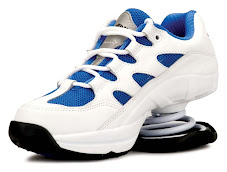"Step on a crack and you'll break your mother's back."
Growing up we believed this and other old wives' tales or myths. We found them to be quite funny. But there are other myths that are no laughing matter, especially when they involve your health.
From bunions to broken bones, doctors with the American College of Foot and Ankle Surgeons (ACFAS) have heard it all. Here is a small collection of myths about foot care and the realities behind them.
Myth: It can't be broken, because I can move it.
Reality: This widespread idea has kept many fractures from receiving proper treatment. The truth is that often you can walk with certain kinds of fractures. Some common examples: Breaks in the smaller, outer bone of the lower leg, small chip fractures of either the foot or ankle bones, and the often neglected fracture of the toe.
Myth: Applying an elastic bandage to a severely sprained ankle is adequate treatment.
Reality: Ankle sprains often mean torn or severely overstretched ligaments, and they should receive immediate care. X-ray examination, immobilization by casting or splinting, and physiotherapy to ensure a normal recovery all may be indicated. Surgery may even be necessary.
Myth: Cutting a notch (a "V") in a toenail will relieve the pain of ingrown toenails.
Reality: When a toenail is ingrown, the nail curves downward and grows into the skin. Cutting a "V" does not affect the growth of the toenail. New nail growth will continue to curve downward. Cutting a "V" may actually cause more problems and is painful in many cases.
Myth: The terms 'fracture,' 'break,' and 'crack' are all different.
Reality: All of those words are proper in describing a broken bone.
Myth: Shoes cause bunions.
Reality: Bunions are most often caused by an inherited faulty mechanical structure of the foot. It's not the bunion itself that is inherited, but certain foot types make a person prone to developing a bunion. While wearing shoes that crowd the toes together can, over time, make bunions more painful, shoes themselves do not cause bunions.
Although some treatments can ease the pain of bunions, only surgery can correct the deformity.
Myth: If you break a toe, immediate care isn't necessary.
Reality: A toe fracture needs prompt attention. If X-rays reveal it to be a simple, displaced fracture, care by your podiatric physician usually can produce rapid relief. However, X-rays might identify a displaced or angulated break. In such cases, prompt realignment of the fracture by your podiatric physician will help prevent improper or incomplete healing. Often, fractures do not show up in the initial X-ray. It may be necessary to X-ray the foot a second time, seven to ten days later. Many patients develop post-fracture deformity of a toe, which in turn results in a deformed toe with a painful corn. A good general rule is: Seek prompt treatment for injury to foot bones.
Myth: Corns have roots.
Reality: A corn is a small build-up of skin caused by friction. Many corns result from a hammertoe deformity, where the toe knuckle rubs against the shoe. The only way to eliminate these corns is to surgically correct the hammertoe condition.
Unlike a callus, a corn has a central core of hard material. But corns do not have roots. Attempting to cut off a corn or applying medicated corn pads can lead to serious infection or even amputation. A foot and ankle surgeon can safely evaluate and treat corns and the conditions contributing to them.
Myth: I can't get skin cancer on my feet.
Reality: Skin cancers can occur anywhere on the body, regardless of sun exposure. Foot and ankle surgeons recommend routine foot self exams to spot suspicious moles, freckles and other spots on your feet that show the signs of melanoma.
Myth: If you have a foot or ankle injury, soak it in hot water immediately.
Reality: Don’t use heat or hot water on an area suspect for fracture, sprain, or dislocation. Heat promotes blood flow, causing greater swelling. More swelling means greater pressure on the nerves, which causes more pain. An ice bag wrapped in a towel has a contracting effect on blood vessels, produces a numbing sensation, and prevents swelling and pain. Your podiatric physician may make additional recommendations upon examination.
Myth: Duct tape can remove a plantar wart.
Reality: Although there are many folk remedies for warts, patients should be aware that these remain unproven and may be dangerous. Patients should never try to remove a wart themselves - this can do more harm than good.
Myth: Putting cotton under an ingrown toenail will relieve the pain.
Reality: Cotton placed under the nail can be harmful. It can easily harbor bacteria and encourage infection.
Tuesday, March 3, 2009
Foot Care Myths Revealed
Labels:
Fast Facts,
Foot Care,
Foot Pain,
Health problems,
Myths,
Preventative care
Subscribe to:
Post Comments (Atom)

No comments:
Post a Comment